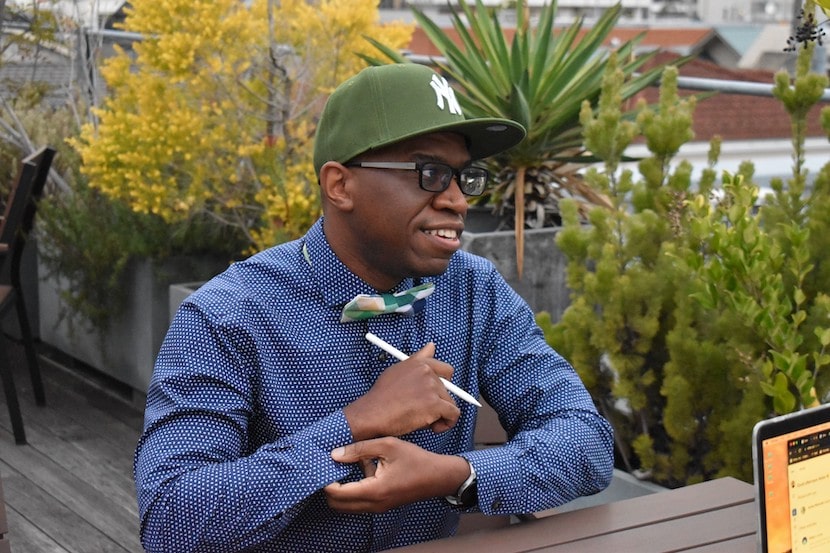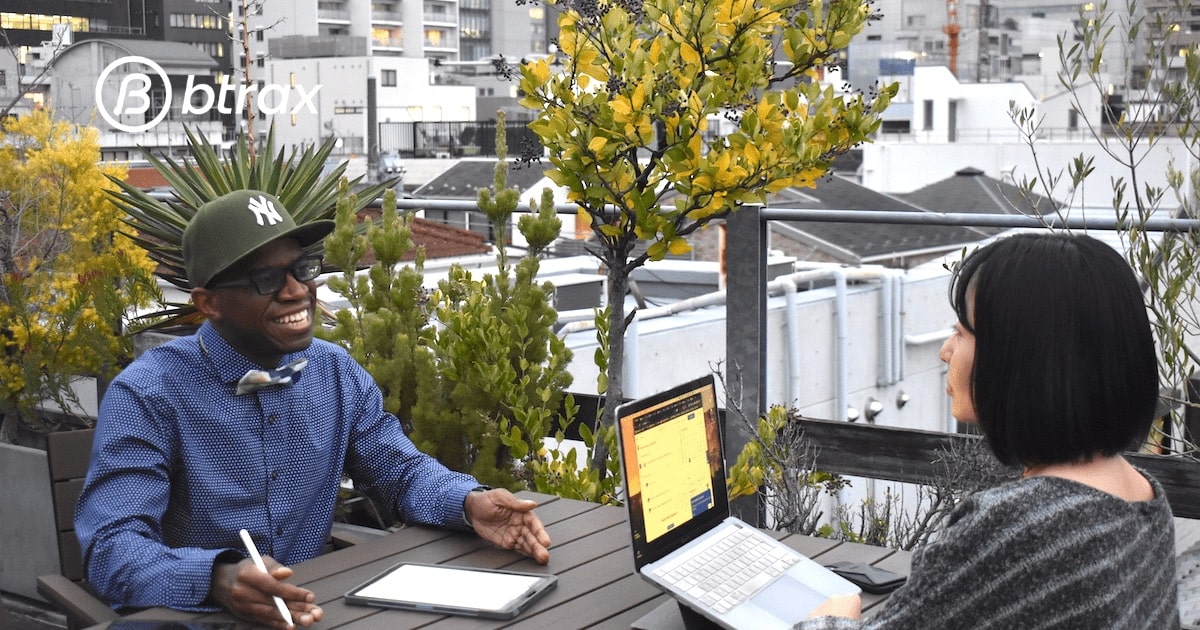
Btrax Design Company > Freshtrax > How did a Zambi...
How did a Zambian architect become a Tokyo-based UX designer after studying at Stanford? – Interview with Nondo Sikazwe Part-1
Although the number of tourists has plummeted in the past years due to the pandemic, the percentage of foreigners in Tokyo has been increasing since 2014 with internationalization rapidly progressing in the city.
Likewise, the rate of foreign designers based in Tokyo also has increased, making it easy to find remarkably talented ones in town who are globally minded and have deep insights into the design industry.
We invited Nondo Sikazwe, a Tokyo-based Zambian UX designer who is also a licensed Architect architect to sit down for an interview.
Nondo was born in Zambia, was a first-class architect in South Africa, and has studied service design in both Japan and the USA.
He is now working as a UX designer at a Japanese design consultancy while actively engaging in education and creating social impact.
Akiko, a UX researcher from Btrax, interviewed Nondo and separated her interview into two articles.
The first article focuses on his career journey and his opinions on the difference between the design market in Japan and the West.
In the second article, Nondo shares his definition of design, unforgettable services and products, and his current goals as a designer.
Index:
- Dive into the Tech industry
- Learning at Stanford
- Journey to Japan
- Current Japanese design market
Nondo Sikazwe
Nondo is a Tokyo-based UX designer who graduated from the University of the Witwatersrand with a Master’s degree in Architecture.
After working as a licensed architect, he entered Chiba University in Japan for another Master’s degree in Engineering.
He also studied Design Thinking and Medical Innovation at Stanford University in the United States.
Currently, he is working at a design consultancy in Tokyo where he seeks to combine his interests in digital services and architecture to help design smart cities.
Outside of work, he volunteers for a non-profit organization and actively supports students in the design industry.
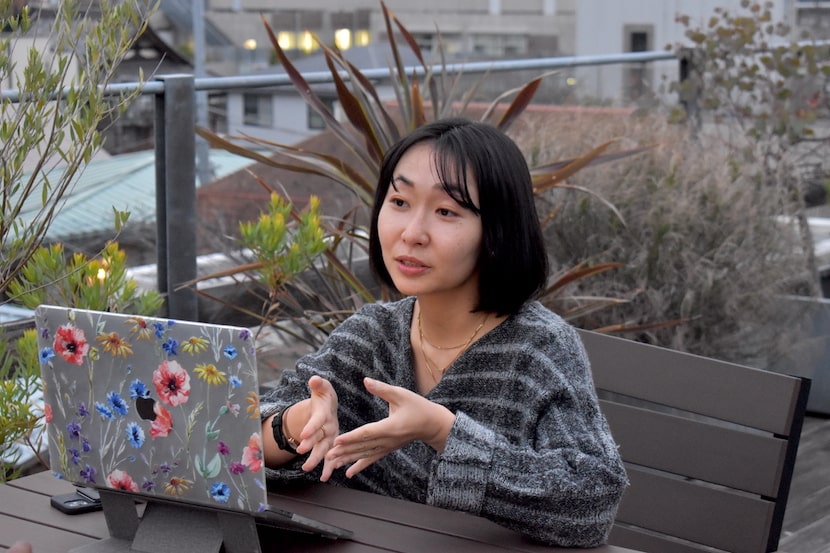
Akiko Sakamoto
Akiko works as a UX researcher at btrax.
She was born and raised in Tokyo. After studying in the Netherlands as an exchange student, she found her passion for start-ups and design.
As a bilingual designer, she enjoys engaging with the international community and bridging gaps among cultures.
Dive into the Tech industry
Akiko:
First of all, I’d like to ask about your career journey. You used to work as a licensed architect and were assigned to big projects. Why did you decide to quit such a promising career to become a UX designer?
Nondo:
I was born in Zambia and studied in South Africa. My first passion was architecture so I did my master’s in that field.
Then, I worked as a lead design architect in different African countries Zambia, Ethiopia, and South Africa, and also spent some time in Japan as an architect at Kengo Kuma and Associates. That’s basically where my adventure into design started.
As an architect, I was only dealing with physical space and had no opportunity to do anything related to digital technologies.
My perspective changed when I was working on a project in South Africa. It was a project to design public housing in a new city for people who would be given accommodation by the government. During that time, I realized the power of technology which could impact the way we provide solutions.
As an architect, I believed that when we build a multi-family residential building we shouldn’t just build buildings, but build communities for people to live in.
Technology enabled me to accomplish it more efficiently. The importance of technology in architecture is becoming very significant when we build a smart city, digital twins (virtual models designed to accurately reflect a physical object), and data in building management systems and such.
The wall between architecture and tech industries
Nondo:
After that project, I decided to pursue a master’s degree in engineering, focusing on service design.
When I say “technology” in this context, it includes all different types of platforms both hardware and software. This is because when we build a community, we need to think about the people in it.
If some members of the community do not have access to a platform that would be a problem.
We need to consider putting several types of touchpoints. I think my role as a designer is about how I connect different technologies, rather than understanding one specific technology.
That’s the reason why I was focused on studying service design in the tech industry. My current job title is “UX Designer and Advisor” but this is because service design is still not widely recognized yet in Japan.
In the future, I’d like my title to be Service Designer.
Akiko:
Wasn’t it hard giving up your career as a successful young architect and diving into a new field?
Nondo:
It was very hard. I think I was lucky since I got scholarships for my studies but still, it was not easy.
It was hard mainly because the majority of people in architecture don’t enter the tech field. Most of them go on to do project management or MBA. So my choice was very rare in the industry.
Also, the whole industry systems are different. Sometimes people say designing in architecture and tech are the same but in reality, they are completely different.
For example, generally speaking, when we work on an architecture project, there are six or seven stages and concept-making is only 10 % of the whole process.
In case we work as a team of 10 people, the people who take care of that part are only 2 and they are always the bosses. Everyone else needs to cover other things such as engineering, council laws, and such.
Another example is that to work as an architect, you need a national license which is not the case for tech designers. Since I’m from a commonwealth country, I was required to spend 7 years learning architecture and also pass a test.
Going from being an architect to becoming a tech designer is as foreign as shifting to becoming a chef. They are all creative but very different. So it has been a giant leap for me.
I think I was lucky as an architect because I could get lots of real-life experience to deliver architectural projects.
When I go back home, there are lots of buildings I have worked on so I can say “I worked on that building!”, which not everyone can say. I know many people who studied architecture at school but stopped there and never built anything. So I am grateful for that.
Overall, it wasn’t an easy path but after studying at Stanford, I became confident that my decision was right.
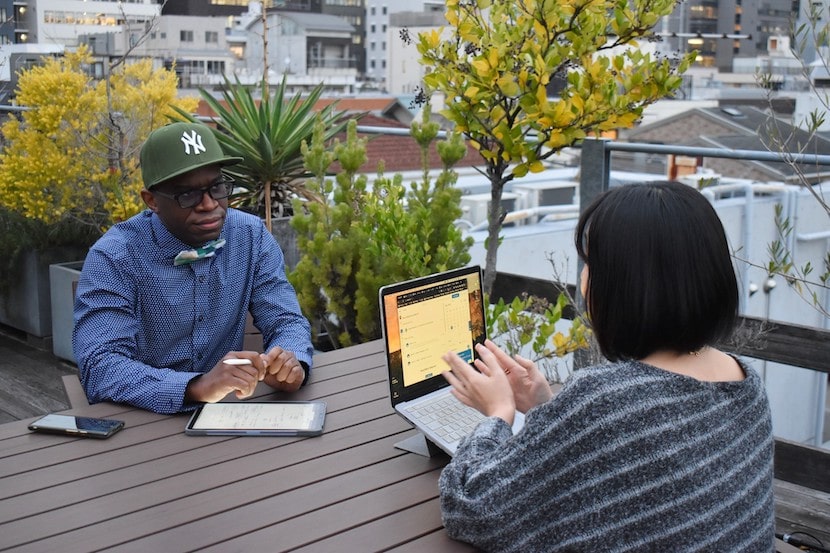
Akiko:
Sounds like you found a growing demand for connecting architecture and technology for the next generation by pursuing better architectural solutions.
As you said, at a glance, design in architecture and tech could look similar for people outside of the industries but they are so different indeed, and it sounds very legitimate when you say that because you are familiar with both fields.
Although it was a big leap, I can still see your passion to design something that people feel a part of, and that connects the community.
Studying at Stanford
Akiko:
Can you tell me what made you study at Stanford university?
Nondo:
After I decided to do my master’s degree program in engineering, I entered Chiba university in Japan.
My research was about service design utilizing technology, and the more I learned the more I wanted to deepen my understanding of service design. So I decided to participate in short-term programs at Stanford University.
Through the programs, I mainly learned about design thinking and medical innovation and this experience made me conscious of what design is and why it’s so fun.
Even after the programs, the collaborations with the people at Stanford are continuing today.
Akiko:
What was your biggest learning there?
Nondo:
For me, meeting students from several backgrounds was a very big thing. Some people used to be teachers, who studied physics or specialized in biology.
It was such a diverse group of people coming together to study design.
When I started my master’s in Japan, many people asked me “Why are you studying design after becoming an architect?” and they didn’t understand my way of thinking. Studying design with students from different backgrounds widened my perspective.
Also, many of the professors I met in California welcomed my background in architecture and encouraged me. That meant a lot to me and meeting those people assured me that I chose the right path.
Akiko:
Your uniqueness wasn’t valued in Japan but it became your strength at Stanford!
Nondo:
Yes. My Japanese friend once told me that “if you want to do very cool things, you need to go outside of Japan first and be successful abroad. So that your idea will be ‘re-imported’ to Japan”.
I understood what he meant after spending some time at Stanford. Thanks to the recognition in California, I got confidence and kept going after I came back to Japan.
Akiko:
Compared to your experience of studying in Japan and Africa, what was the education at Stanford like?
Nondo:
When I was working at a Japanese architecture firm, I had lots of opportunities to meet high-positioned people.
However, none of those people interested me that much because I think what I can learn from them can be learned through books and what makes them high-positioned was the seniority-wage system rather than their uniqueness.
At Stanford, everyone I met had several backgrounds, unique talents, and different ways of thinking. Collaborating with them inspired me a lot more than when I was in a small circle of architects.
Also, what makes Stanford special is its strong connection with the business communities.
Comparing universities in Japan and Africa, it’s very rare to have so many business professionals who engage with the students. At Stanford, students can meet people who founded startups, and entrepreneurs who teach and support the students in the classroom in their first year. They learn that any project can be a business.
I think it’s the reason why lots of students quit before graduation. Within two years, they realize that getting a diploma is just a stepping stone.
So to sum up, open-mindedness, passion, drive, and connection with the external communities are the characteristics of Stanford.
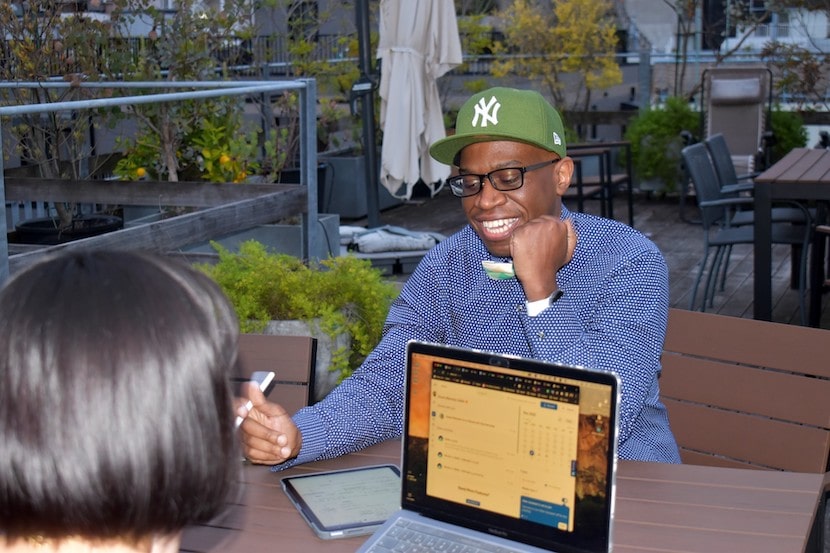
Akiko:
That’s very interesting. I think while taking a risk is considered positive in the US, that tends to be taken as a negative in Japan.
Also, in Japan students need to decide on their major before entering university, and after that most people narrow down their specialty so being interdisciplinary may look very foreign to Japanese people, I guess.
Having strong connections with the external community and enabling students to learn from real-life experiences sounds very attractive.
I’m also glad to hear that your uniqueness was valued and made you confident even after coming back to Japan!
Journey to Japan
Akiko:
From working under a famous architect to obtaining a master’s degree, you’ve had a strong connection with Japan. What attracted you to come here?
Attracted by manga, inspired by a novel
Nondo:
When I was a kid, I loved Japanese manga and my dream was to be a mangaka (comic artist). I still have my art from back then. However, gradually I found that living as a mangaka is very difficult so I gave up the dream.
As a child, I read Japanese manga such as Shonen Jump and wondered what this story would be like if it were to take place in Africa. Would the main character fight elephants?
I used to fantasize about things like that while reading manga. I was interested in Japan because of manga, and one of my teachers at school recommended a book to me: “Inei Reisan” by Junichiro Tanizaki.
This novel gave me a deeper understanding of Japanese culture. His literature beautifully describes how history and culture have influenced Japanese society in modern and contemporary times.
Japan was very attractive to me because it has become a modern nation but still preserves its own unique culture.
When I go to major cities in the world, such as Sydney or New York, the central areas all have a similar atmosphere and I think, “It looks like the cities I have been to before,” but Tokyo always makes me feel strongly that “I am in Tokyo,” which is very unique.
Akiko:
What exactly do you think is unique about Japan?
Japan is an island nation, and for better or worse, it is physically isolated from the rest of the world. So, coming from an outside country, everything seems new and perfect, and it makes me want to know more and more things.
At the same time, many people in Japan have never been abroad.
As I interact with people who have never had much interaction with people from other countries, I am made very conscious of the fact that I am from Africa, and I sometimes feel as if I am representing my home country, Zambia.
Some people have never heard of Zambia in the first place, so I find it gratifying that by talking with me I can help them learn about a new country and expose them to a different culture and way of thinking.
As I talk about my background, I feel more confident about my home country and myself compared to before, and I think this is thanks to my coming to Japan.
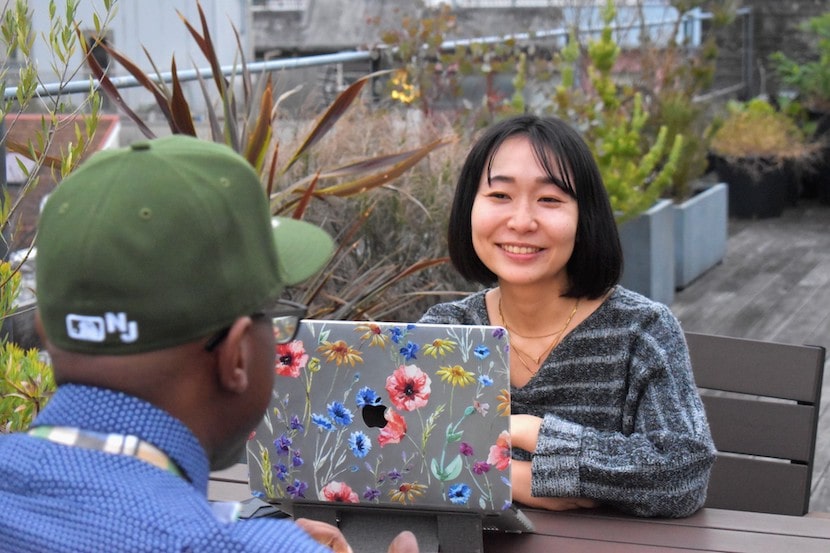
Akiko:
I am surprised and happy to see so many people of our generation, the so-called Millennials and after, who grew up watching Japanese manga and anime.
I am always surprised and happy to see so many people of the same generation who grew up in completely different countries and cultures, but who watched the same works as children and know about Japan through them.
However, anime and manga do not reflect all of the Japanese cultures and often have a biased image, so I think it is great that you have used them as a gateway to further deepen your understanding of Japan through the world of literature and to live in Japan!
Interestingly, you became more aware of your own identity after coming to Japan.
I think it is wonderful that you have a positive attitude toward introducing Zambia to so many Japanese who may not know anything about your home country.
How is the Japanese design market today?
Akiko:
You are currently based in Tokyo. What is your impression of the Japanese design market?
Nondo:
Two years ago, when I was looking for a job in Japan after finishing my master’s program, I wanted to work as a service designer, but I realized that the concept of service design was still not well known in Japan.
In Western companies, there is a position called service designer, but in Japan, there are positions for UI/UX designers, but almost no positions for service designers.
The low visibility of service design and the concentration of interest on DX and business design may be one of the characteristics of the current Japanese market.
However, the concept of UX design, which was not recognized in Japan 10 years ago, is now quite widespread, and I believe that service design will also gain recognition in the future.
Clients’ needs and approaches to design are different in Japan
Nondo:
Another thing I feel in the Japanese market is that what is required when sharing designs with clients is very different from what is required in the West.
In Japan, I think quantitative data and facts are very important. In the West, it is valued to successfully convey the emotion and story of how the customer will feel by offering this product.
In Japan, I think in most cases, the conversation does not start without quantitative data and facts to support the idea.
In the U.S., presentations that use a lot of visual imagery and provoke emotions are effective, but in Japan, it seems to be different.
In contrast to the Western approach, which focuses on “what the user feels” and decides on the concept before working out the details, I feel that in Japan the conversation often starts with details such as “how many ml of liquid to put in a container made of what kind of material”.
I am not trying to say that one is better or worse than the other, but I simply feel that there is a big difference in approach and what is evaluated.
Also, regarding values in work, many designers at my current workplace ask “Why do we design? Do we need a design approach to this problem in the first place?” etc., are discussed enthusiastically and complex charts are meticulously created.
I am always impressed and inspired by the enthusiasm and skill of my colleagues. I feel strongly that they are trying to make design a value and a brand.
On the other hand, for me, I sometimes feel that it is more important to think and create something through collaboration with others rather than the value of design itself, so I feel there is a difference in this area.
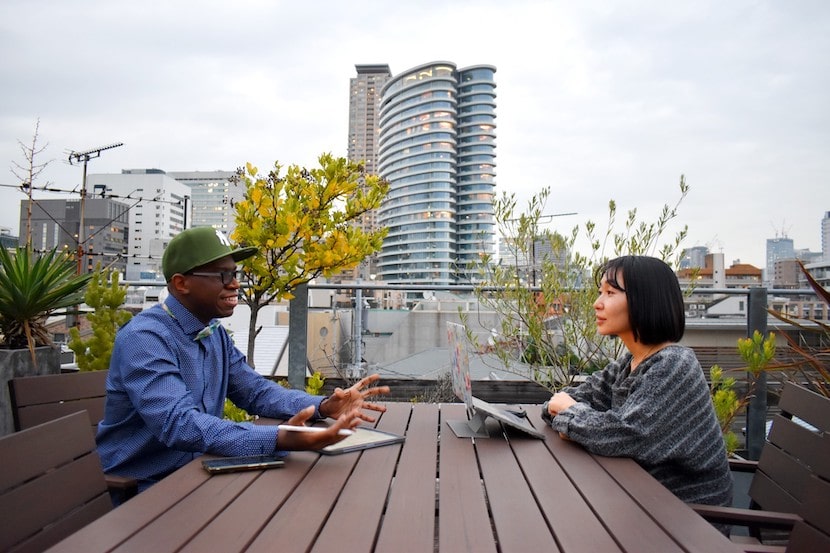
Akiko:
As for client needs, as you mentioned, many companies in Japan may not yet recognize the importance of “thinking from the user’s point of view.
It depends on the type of data that the client is focusing on, but I think that in many cases when decisions are made based solely on business rationality, relying on mechanical statistical data, the feelings of users are often left out of the equation.
At first glance, “emotion” may seem abstract and irrational, but from a long-term perspective, it is a significant factor in terms of gaining loyalty and differentiating oneself from other companies.
I think it is important for designers as well as clients to understand the perspective of “for whom the product is created” to create products and services that will be loved for a long time.
As for the attitude toward work, it is important to broaden one’s perspective through collaboration with various people with an open mind.
I felt that if we can broaden our perspectives through collaboration with various people, it will lead to more comprehensive solutions.
Conclusion
In this first part of our interview with Nondo Sikazwe, we asked him about his career shift from the architecture industry to the tech industry, how he came to Japan, and the Japanese design market from a global perspective.
He says that it was not an easy path for him, as he met people who knew nothing about his home country when he came to Japan, and he had a hard time gaining an understanding of the people around him at first due to the huge gap between the architecture industry and the tech industry.
Just as UX design, which had little recognition in Japan 10 years ago, is now a commonplace topic in the business world, the concept of service design, which has not yet penetrated the Japanese market, will probably become more important in the future by global trends.
In the second article, we will learn about Nondo’s definition of design, the unforgettable products in each country, and his future design goals.

